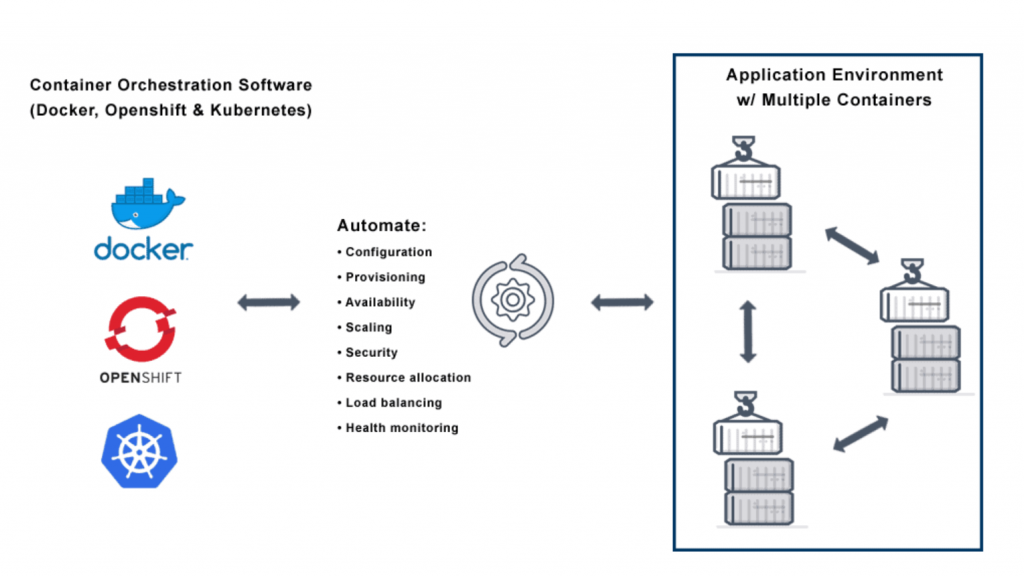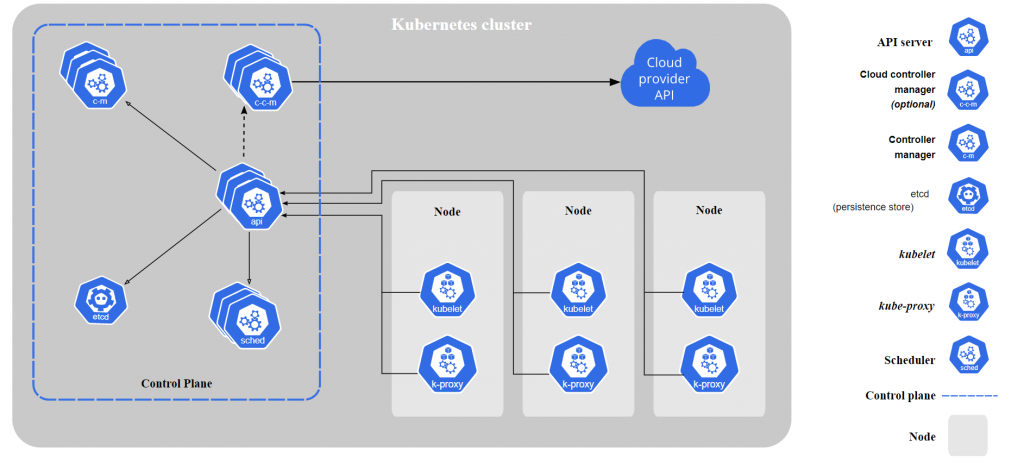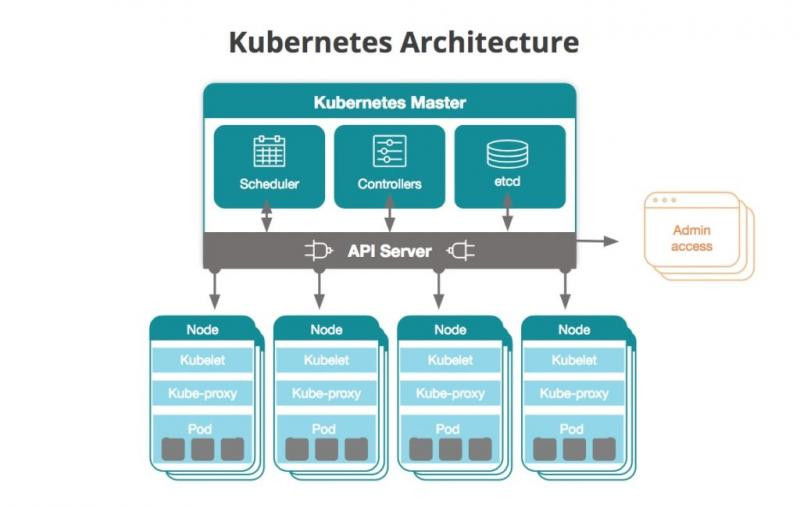Production-Grade Container Orchestration with Kubernetes
Production-Grade Container Orchestration with Kubernetes
16 September 2021
Overview
Kubernetes Engine is Google Cloud Platform’s (GCP’s) managed Kubernetes service and With Kubernetes service, all the GCP customers can create and maintain their own Kubernetes clusters without having to manage the Kubernetes platform.
Kubernetes Engine runs containers on a cluster of VMs. It determines where to run containers, where to monitor the health of containers, and manage the full lifecycle of VM instances. This set of tasks is known as container orchestration.
Table of Contents
- Kubernetes Cluster Architecture
- Container Orchestration
- Use of container orchestration
- Main components of Kubernetes
- How does container orchestration work?
- Benefits of Containerized Orchestration Tools
Kubernetes Cluster Architecture
A Kubernetes cluster consists of a cluster master and one or more nodes, which are workers of the cluster. The cluster controls the master cluster and can be replicated and distributed for high availability and fault tolerance.
The cluster master manages the services provided by Kubernetes, such as Kubernetes API, Controller and Scheduler. All interactions with the cluster are done via Master using Kubernetes API. The cluster master issues a command which action on a node. Users can also interact with the cluster using the Kubectl command.
Nodes execute the workloads that run on the cluster. Nodes are VMs that run containers Configured to run the application. Nodes are mainly controlled by the cluster master, but Some commands can be run manually. Nodes run an agent called kubelet, which is Service that communicates with the cluster master.
Kubernetes Engine is a container orchestration system that deploys applications to run Group Kubernetes is designed with a single cluster manager and worker nodes.
Kubernetes organizes processing into workloads. There are many events How Kubernetes processes workloads make up its core functionality.
Container Orchestration
Container orchestration is the automation of most of the operational effort required to run containerized workloads and services. It covers many of the things software teams need to manage the lifecycle of a container, including provisioning, deployment, scaling (up and down), networking, load balancing, and more.


Use of container orchestration
Use of container orchestration to simplify and manage tasks such as:
- Provisioning and deployment
- Configuration and scheduling
- Resource allocation
- Container availability
- Scaling or deleting containers based on balancing workloads over your infrastructure
- Load balancing and traffic routing
- Monitoring container health
- Setting applications based on the container in which they will run.


Main components of Kubernetes
- Cluster: A control plane and one or more than one compute machines or nodes.
- Control plane: The collection of procedures that controls the Kubernetes nodes. This is where all the task assignments begin.
- Kubelet: This service is running on nodes and reads the container manifest and securely defined containers are started and running.
- Pod: A set of one or more containers deployed to a single node and all containers in a pod share an IP address, IPC, hostname, and other assets.


How does container orchestration work?
The container orchestration works with tools like Kubernetes Engine and Docker Swarm. Configurations files tell the container orchestration devices how to port between containers and where to store logs. The orchestration device also scales the deployment of containers into clusters and identifies the best host for the container.This tool works in any environment that runs containers.
Orchestration devices for Docker include the following:
- Docker Machine — It provides hosts and installs Docker Engine.
- Docker Swarm — Clusters multiple Docker hosts under one host. It can also unite with any device that works with a single Docker host.
- Docker Compose — Deploy multi-container applications by making the needed containers.
Orchestration devices for Kubernetes include the following features:
- Automated deployment and duplicate of containers.
- Online scale-in or scale-out of container clusters.
- Load balancing groups of containers.
- Automated rescheduling of failed containers.
Benefits of Containerized Orchestration Tools
- Increased Mobility: Scale applications with a single command and scale only specific tasks without affecting the entire application.
- Simple and fast deployment: Quickly build new containerized applications to address growing traffic.
- Increase productivity: Simple facility process and reduce dependency mistakes.
- Better security: Share unique resources without risking internal or external protection. Application isolation increases web application protection by dividing each application’s process into different containers.


